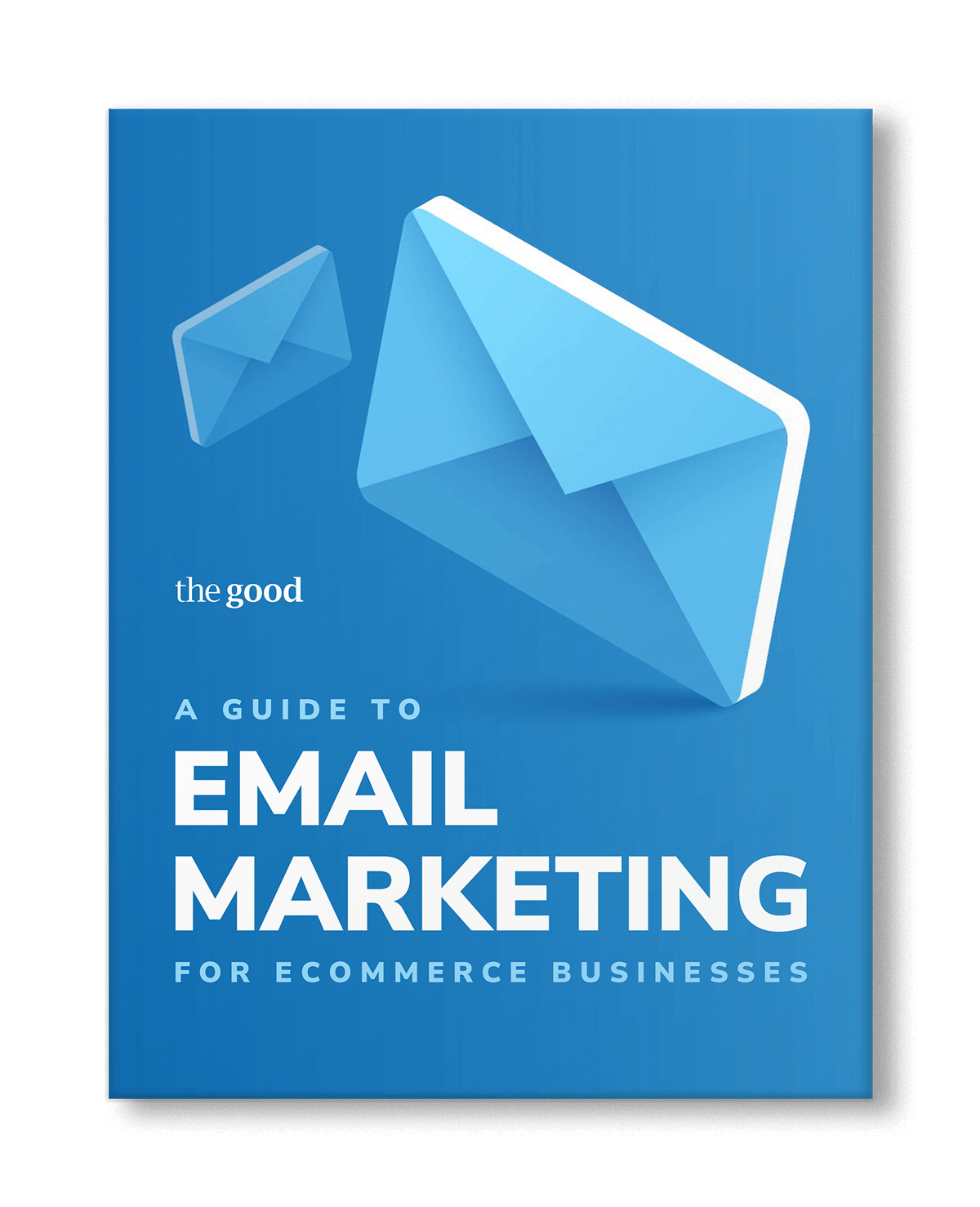
Using SMS and Email Marketing To Accelerate Ecommerce Growth
We’ve collected 5 ways you can use SMS and email marketing to focus your ecommerce efforts and see big results.
This post is based on our podcast with Dylan Kelley, email and SMS marketing expert and founder of Wavebreak.
When it comes to ecommerce, there is no shortage of tools, platforms, and apps out there, all making big claims like being able to 10x your revenue or triple your conversion rates.
And while some tools, platforms, and apps truly can boost your ecommerce brand, it’s very easy to get shiny-object syndrome. To quickly jump between tools and tactics and platforms, hoping to find the silver bullet that magically fixes everything. This scattered, shotgun approach almost always leads to mediocre results at best.
In most cases, simplicity can actually be your secret weapon.
The Lure Of Shiny Objects
In his book Essentialism, Greg McKeown says:
We discover how even the many good opportunities we pursue are often far less valuable than the few truly great ones.
This principle also applies to marketing. The fastest-growing, strongest ecommerce brands don’t allow themselves to be distracted by the newest, “shiniest” marketing tactics and tools. Rather, they commit to their marketing strategies, give them sufficient time to determine whether they are successful, and then optimize where possible.
If you constantly jump between marketing channels and methods, you won’t be able to effectively evaluate the results and then make improvements. You end up wasting significant amounts of time and effort with very little to show for it. A much more effective strategy is to build around proven methods, dial those in, and then strategically expand your efforts.
Two channels that have proven to be particularly effective for ecommerce brands are email and SMS marketing.
Despite being around for 25+ years, email marketing is still as powerful as ever. 3.9 billion people used email on a daily basis in 2020. That’s an absolutely enormous audience to tap into.
The facts about SMS marketing are equally eye-popping. SMS messages have an open rate of 98% and 60% of people read texts within five minutes of receiving them. On top of this, nearly 80% of customers want to receive offers via SMS.
Why do SMS messages have such high engagement rates? Primarily because SMS messages receive more attention than almost every other type of marketing.
Think about your own experience. It’s really easy to ignore display ads, marketing emails, pre-roll YouTube ads, etc. But when you get a text message, you almost always look at it immediately to see if you need to respond. Simply put, it’s much easier to get people’s attention with a text message than with most other types of marketing.
And when you combine SMS with email marketing, you have access to two of the primary inboxes almost everyone uses. You can cut through the noise and grab people’s attention.
5 Simple Ways To Leverage Email and SMS Marketing
For smaller ecommerce brands, implementing SMS and email marketing is easier said than done. With so many different tasks to do and limited resources, the thought of adding in new marketing channels can seem intimidating or not worth the effort. However, for most small ecommerce businesses, there’s low-hanging fruit that can be easily grabbed.
However, a quick caveat is in order. To truly benefit from email and SMS marketing, you first need to have good product-market fit and an established customer base, even if that base isn’t incredibly large. To put it bluntly, if your product isn’t especially good, it’s going to be very difficult to grow your brand, regardless of the marketing tools or strategies you use. As the saying goes, you can polish a dud all you want but it’s still going to be a dud.
A Guide to Email Marketing For Ecommerce Businesses

Once you achieve product-market fit and have established your customer base, here are some simple ways to get started with email and SMS marketing:
Use Pre-Built Templates
Most email marketing platforms include pre-built templates that apply to specific situations, such as when someone abandons their shopping cart. Instead of starting from scratch, customize these templates to fit your brand and then start using them. Instead of trying to reinvent the wheel, take what’s already been created and build on it.
Is it better to create 100% customized email sequences for your customers? Probably. But until you have the bandwidth to do that, take advantage of any available templates.
Start Small
You don’t need elaborate email sequences to reap the benefits. Start small and then expand from there. When it comes to email, consider creating the following:
- Welcome email for when someone opts into your email list
- Abandoned cart email encouraging the customer to finish the transaction
- Browse abandonment email encouraging the customer to continue shopping
- Post-purchase email thanking the customer, providing relevant order information, and possibly cross-selling
- Monthly informational email to keep your list warm
Creating just those five simple emails can significantly boost conversion rates, revenue, and customer acquisition. For example, almost 88% of all online shopping carts are abandoned before the customer completes a transaction. The simple act of implementing abandoned cart emails can earn you back between 3% – 14% of lost sales.
As you grow, you can add additional contextual emails that trigger based on customer behavior, but that’s down the road. Start small and reap the benefits.
Know Your Brand and Your Audience
Your marketing needs to align with both the brand you’re trying to build and your target audience. For example, well-designed emails that include images tend to convert better, especially with younger audiences, than plain text emails. A study by Xerox confirms this, noting that content which contains colorful visuals is 80% more likely to be read than simple plain text.
Higher conversion rates with younger audiences also makes sense when you consider that they spend significant amounts of time on social media platforms like Instagram and TikTok, which are visually driven.
So while you don’t want to spend endless hours trying to create a perfect email, taking the time to craft a visually appealing one with relevant messaging can boost your results. Additionally, sending creative emails is an effective way to build brand equity and help your brand stand out from the crowd.
If you struggle to design captivating images, tools like Canva and Venngage have hundreds of professionally designed templates you can use.
To be clear, there are times when it’s best just to send plain-text emails. If you’re scrambling just to stay on top of everything, it’s better to send a plain-text email to your customers than not send one at all because you don’t have enough time to design it. Over time, as your company grows, you can dedicate more time to the look and feel of your emails.
Segment By Customer Type
With email marketing, it’s common to segment contact lists by demographic information, purchase history, etc. And while that can be effective, segmenting based on customer type and where people are in the customer journey often translates into better results.
As a simple example, say a man purchases a particular brand of pants from you. If you generically segment your email list based on what brands people purchase, you can end up promoting products that are totally irrelevant to the man even though they’re the technically same brand.
However, if you segment your list by customer type and customer journey, you can be much more targeted with your emails. You can ensure that you only promote products for men since it’s unlikely that he’ll buy products for women, even if they’re the same brand. If it was his first purchase, you can send him follow-up emails specifically designed to create brand loyalty. If he’s a repeat customer, you can send him targeted offers that help with customer retention.
The more you know about your customers, the more effectively you can segment your lists.
Supplement Email With SMS
SMS marketing works particularly well as a supplement to email marketing, and it requires a slightly different approach. People are used to getting multiple emails from a company over a relatively short time, whether that’s in the days leading up to a sale or in the hours and days after a cart is abandoned.
If you send the same amount of text messages, however, it can come across as invasive. A better strategy is to use SMS to capture a customer’s attention, particularly if they haven’t yet responded to emails or the matter is time sensitive. As SimpleTexting notes, almost 50% of consumers are willing to opt-in to receiving text messages about flash sales or promotions.
A simple text message reminding someone to complete their purchase or alerting them to a special promotion can be the small nudge that’s needed.
Be strategic in the ways you use SMS to communicate with your customers. If you go crazy with it, you risk annoying them. But when used in tandem with your email marketing, it can lead to significantly higher conversion rates.
Focused Efforts > Outsized Results
The temptation to be constantly looking for the latest, greatest tool or platform that will solve all your problems is certainly understandable. It’s human nature to want to find the absolute best solutions to our problems.
The reality, however, is that focusing your marketing efforts on fewer channels, such as email and SMS marketing, produces greater results than trying to always incorporate the latest trend.
If your ecommerce business is relatively small, you need to focus your efforts even more due to limited bandwidth. Look for easy wins, start small, and focus on building connections with your audience. As email and SMS marketing fuel your growth, you can continue to expand your efforts.
Enjoying this article?
Subscribe to our newsletter, Good Question, to get insights like this sent straight to your inbox every week.
Enjoying this article?
Subscribe to our newsletter, Good Question, to get insights like this sent straight to your inbox every week.

About the Author
James Sowers
James Sowers is the former Director of The Good Ventures. He has more than a decade of experience helping software and ecommerce companies accelerate their growth and improve their customer experience.